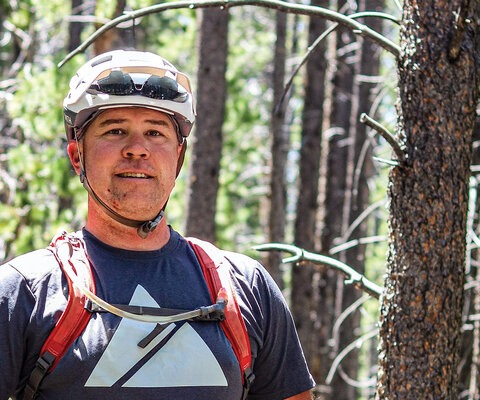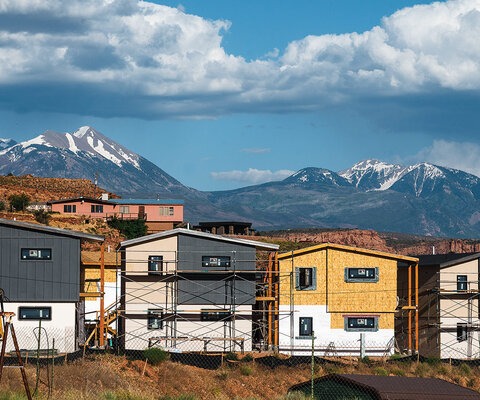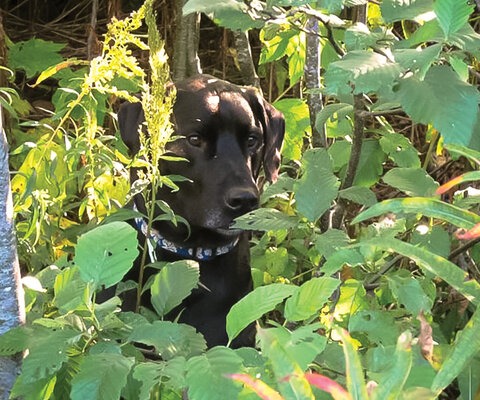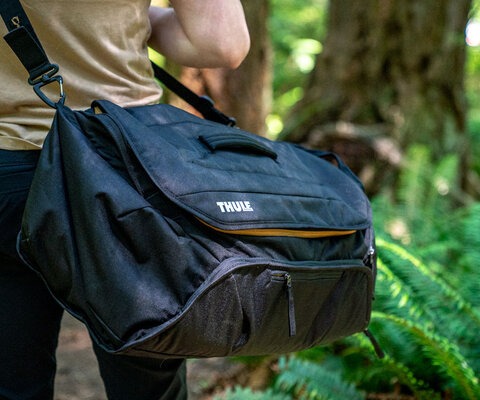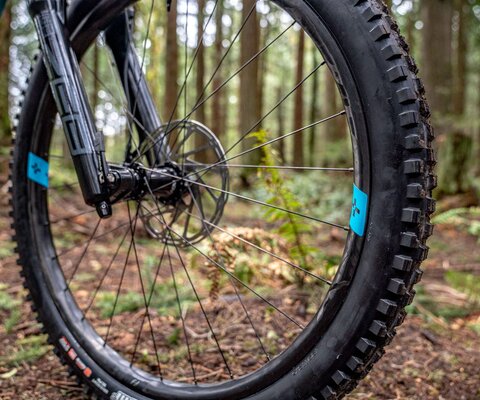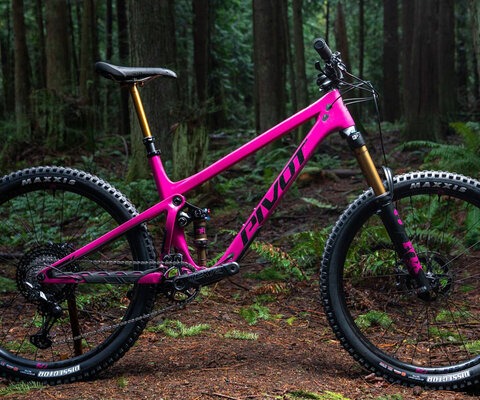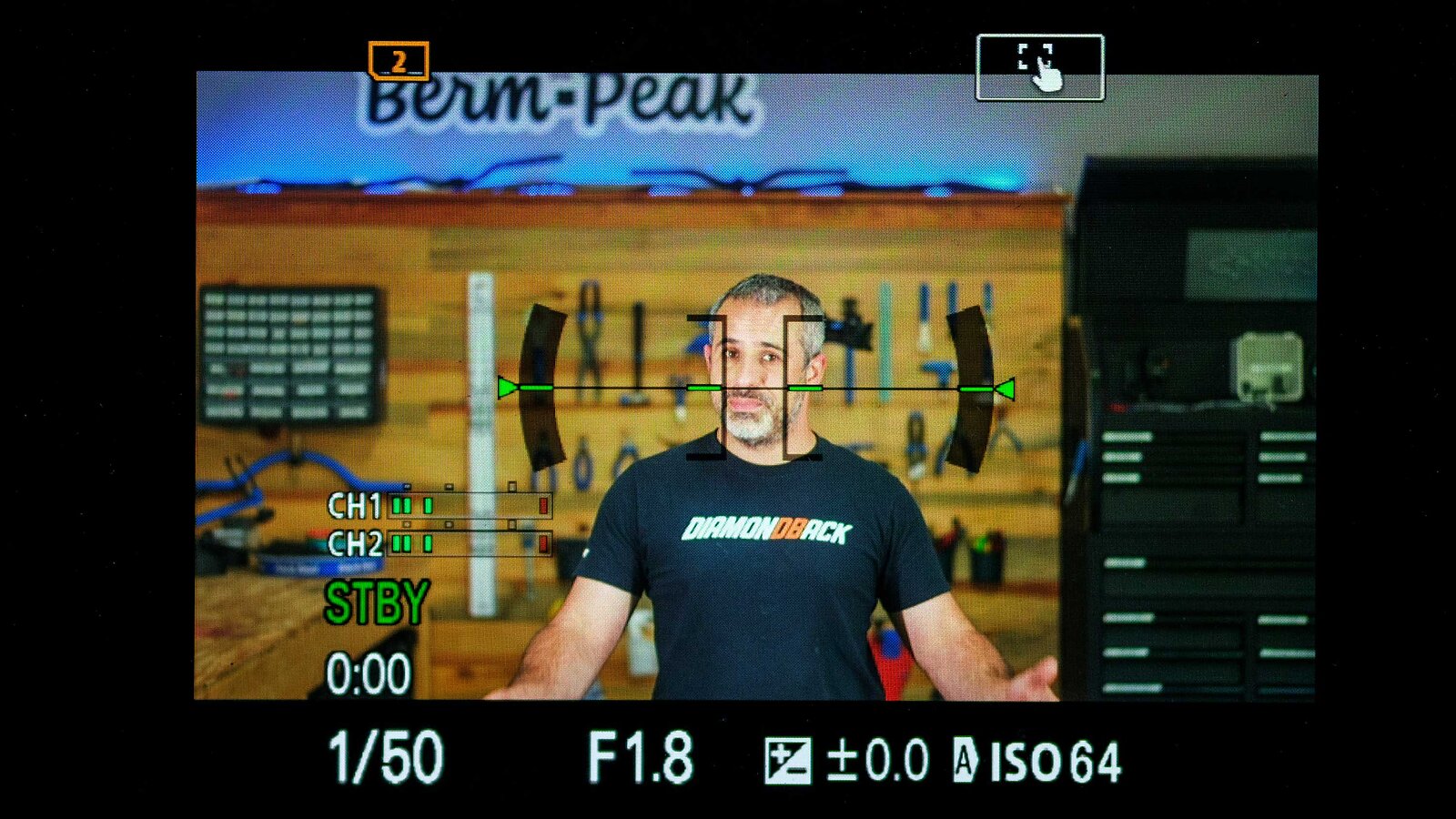
Realms of Reality How Seth Alvo is Harnessing a Digital Community to Build Trails
Words by Kristian Jackson | Photos by TJ Kearns
For residents of western North Carolina, a mention of the town of Canton will likely spark thoughts of the massive paper mill that has operated there for more than a century. On any given day, depending on how the wind is blowing, the plant’s presence can be felt from miles away. While outdoor recreation helped fuel the economies of many neighboring towns, Canton has been known mostly for its industry. That all changed in April of this year.
On a sunny spring Saturday, the mayor and town manager were joined by about 1,500 people to celebrate the opening of Berm Park, a free public bike park. In the middle of the crowd, standing alongside his bike, was the reason the park had come to be. Seth Alvo, creator of one of the world’s most popular YouTube mountain bike channels, was proudly watching one of his dreams being realized. And the fulfillment of this dream might well have established a new paradigm for the building of free public trails.
Berm Park, a bike-specific playground within the larger Chestnut Mountain Nature Park, marks a new era in the funding and building of trails by tapping into the generosity of a dedicated online community and then working tirelessly to rally government officials, private citizens and nonprofit agencies toward a common cause. It’s also a manifestation of Seth’s belief that if you want something done, you just have to do it with the help of your friends.
Before he became a full-time YouTuber, Seth lived and breathed BMX. Growing up in Long Island, New York, he rode street and make do with what he had. He would see videos of people riding skateparks and felt frustration over the fact that there wasn’t one where he lived. Fortunately, his family had a do-it-yourself spirit and was filled with people who started their own businesses, worked hard and had a realistic view of how things worked. His father managed projects for hazardous waste removal and he imparted equal doses of optimism and realism to Seth at a young age. When Seth wanted to build a ramp for his bike, his dad helped him do it. Soon there were jumps everywhere.
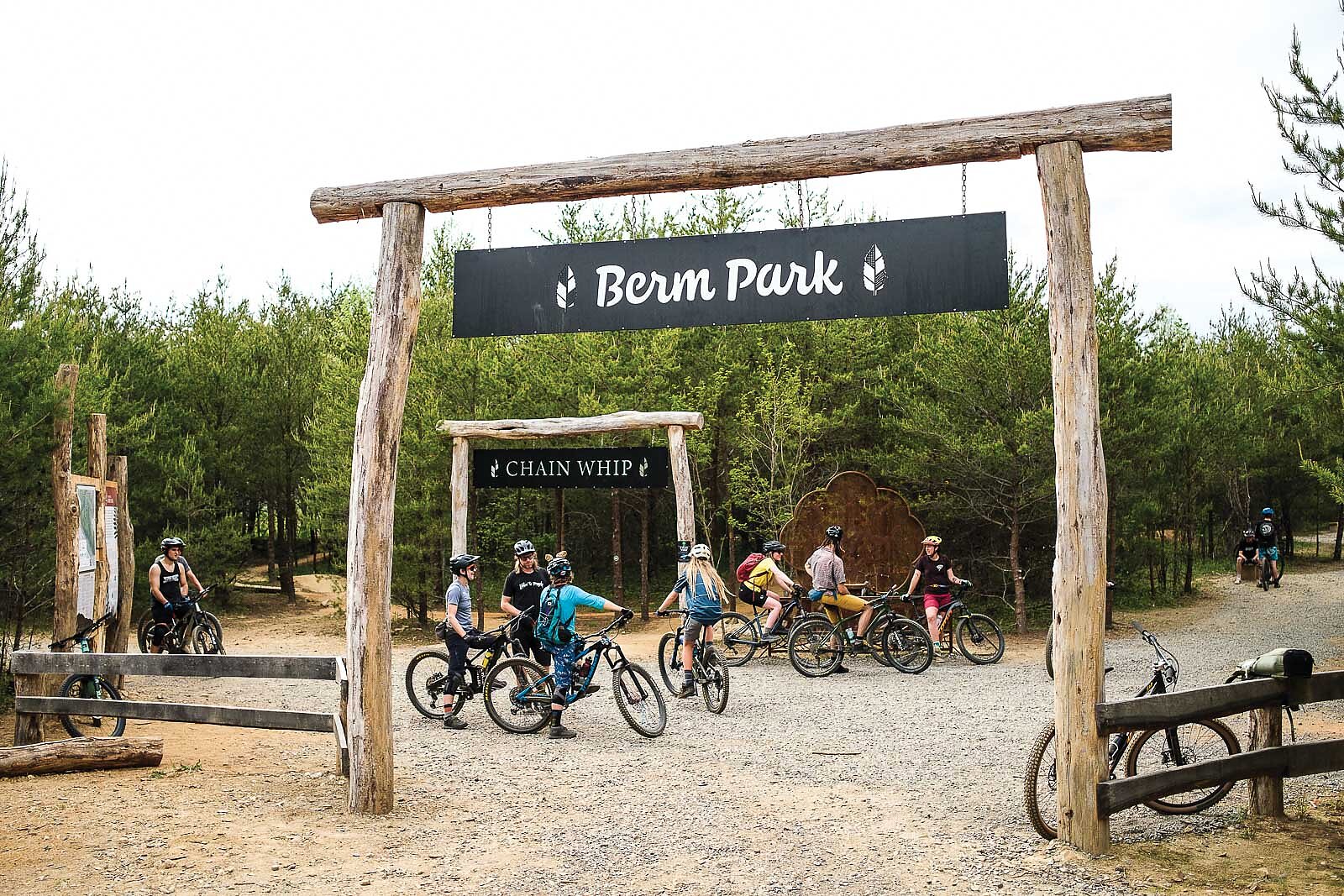
“We made stuff in my driveway. We got pallets and stacked them up. We had to learn how to do everything,” Seth says. “That’s where I learned how to bunny hop and wall ride. That’s where I learned to build so much now. If you’re able to build something out of nothing, then imagine if you had a tractor and a place you’re allowed to build stuff.”
Building a massive YouTube audience wasn’t Seth’s original goal, but his initial career as a web developer afforded him some free time to ride bikes. Having grown up watching bike videos, he decided to make some of his own.
“My plan was to make these videos and try and earn a little bit of extra money on the side,” he says. “I just thought that once I had a little bit of a following, maybe I could do something locally.”
At that time, he was living in Miami, Florida, and had embedded himself into the city’s large bike scene. There were morning road rides and critical mass events with more than 1,000 people, and Seth was always there with his camera, ready to document. Yet that rarely stopped him from getting in the middle of the action, and before long most people knew him for his antics.
“If a whole group of people were riding their bikes across a bridge,” he says, “I was the guy riding the railing.”
One of Seth’s first YouTube videos is a tutorial on how to install a budget dropper post. The episode, low budget in its own right, ends with Seth bunny-hopping his bike after installing the post. The comments started.
“People were like, ‘Holy crap, that’s a really high bunny hop,’” Seth says. “Then I thought, ‘That was a high bunny hop? You should see Danny MacAskill’s videos.’”
He kept making videos, most of which were tutorials: how to wheelie, how to manual, how to do a 180. People began subscribing and asking for more. At first, Seth was puzzled as to why people wanted to watch him, but he soon realized that much of his appeal was in his unassuming nature. He was simply being himself, and people could relate to that. In the crowded ecosystem of online videos, full of polished professionals and superhuman stunts, his down-to-earth demeanor was starting to stand out.
“Even the channels that were putting out tutorials, it was always from an expert, it was really serious,” he says. “They were making sure not to get anything wrong, making sure they weren’t viewed as a beginner. People don’t want to be taught that way, and they don’t want to be talked to that way.”
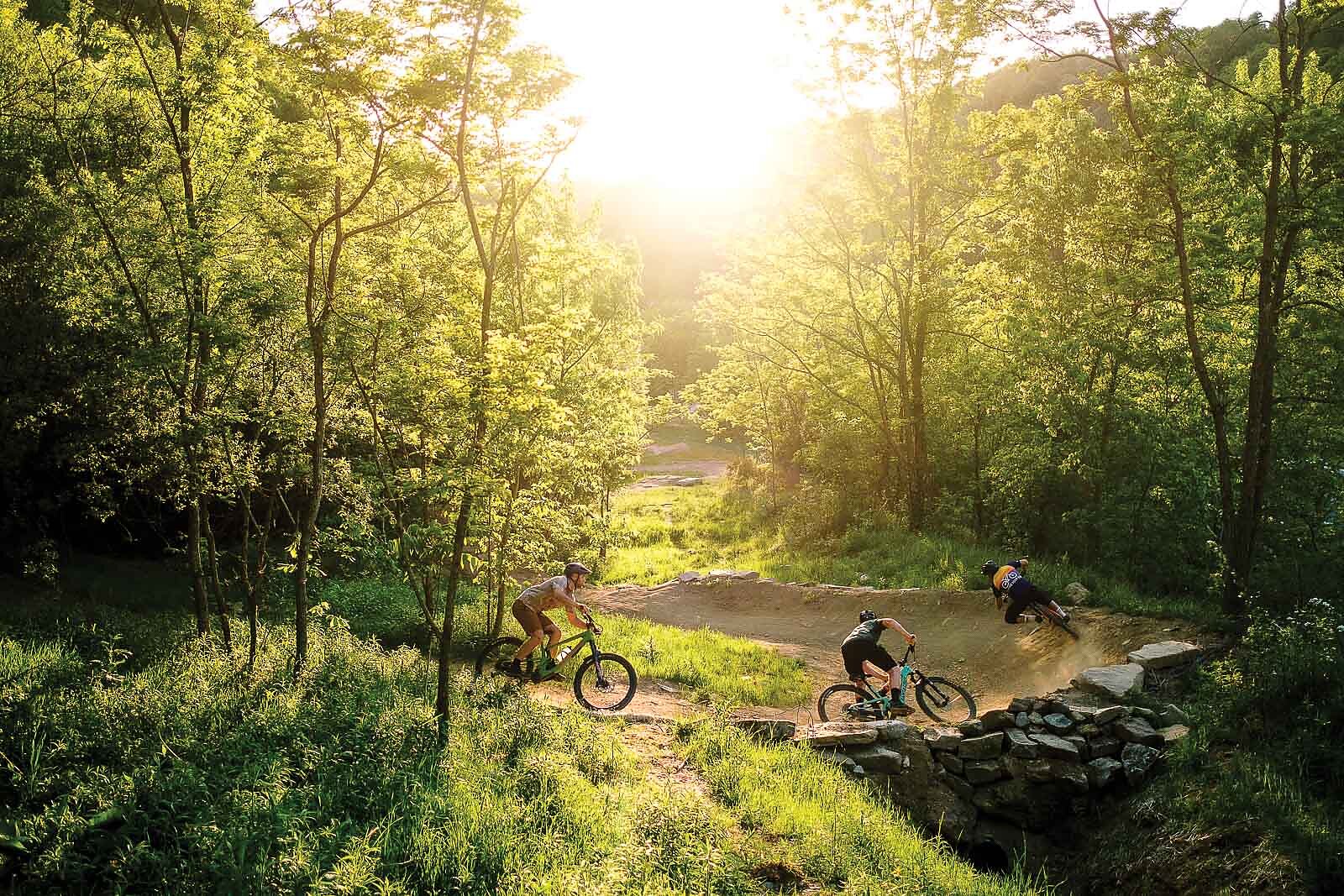

His YouTube channel started off as “Seth’s Bike Hacks,” a nod to his DIY, everyman ethos. He brought his fans into the world of mountain biking and showed them his backyard stunts, his friends, his dog and his bike hacks, all without pretense. As his following continued to grow, Seth realized he could make YouTubing his career and started a Patreon account to help stabilize his income. Attracting subscribers came easily and only deepened the loyalty and investment felt by his burgeoning fan base.
Fast-forward to today, his channel has been rebranded as “Berm Peak,” named after the mountain bike paradise he created after buying a mountaintop property near Asheville, North Carolina in 2019. The compound now includes a sophisticated trail system with machine-built berms and elaborate features such as a teeter-cannon. His three-bay garage houses his workshop, a guest hangout zone and a recording and work room, all separated from his living quarters. “Berm Peak,” together with its auxiliary counterpart for more casual content, “Berm Peak Express,” encompasses everything around mountain biking. And Seth now has a team working with him, hustling to keep 2.42 million subscribers entertained.
“It’s not just how to shred hard and do whips,” he says. “You’ve got to build stuff to ride on. You’ve got to fix your bike. Anything loosely related to MTB, we go deep into it.”
For Seth to remain creative and continue to be himself, however, requires a high degree of organization—and his workspace is meticulously structured with systems that enable him to stay on task and perform. If a camera battery is lying flat, it means it’s not charged. If he needs to identify a bolt, he consults a wall-mounted thread checker.
High on the wall above the thread checker hangs his collection of YouTube awards. Front and center is a gold one commemorating the moment he surpassed one million subscribers. His success is the result of a formidable work ethic that revolves around all-day filming sessions and hour after hour of script writing and video editing. The persistence to his craft is due mostly to the fact that he wants to make something that his audience will truly appreciate and support. In his videos, he comes across as someone who wants nothing more than to make his viewers happy.
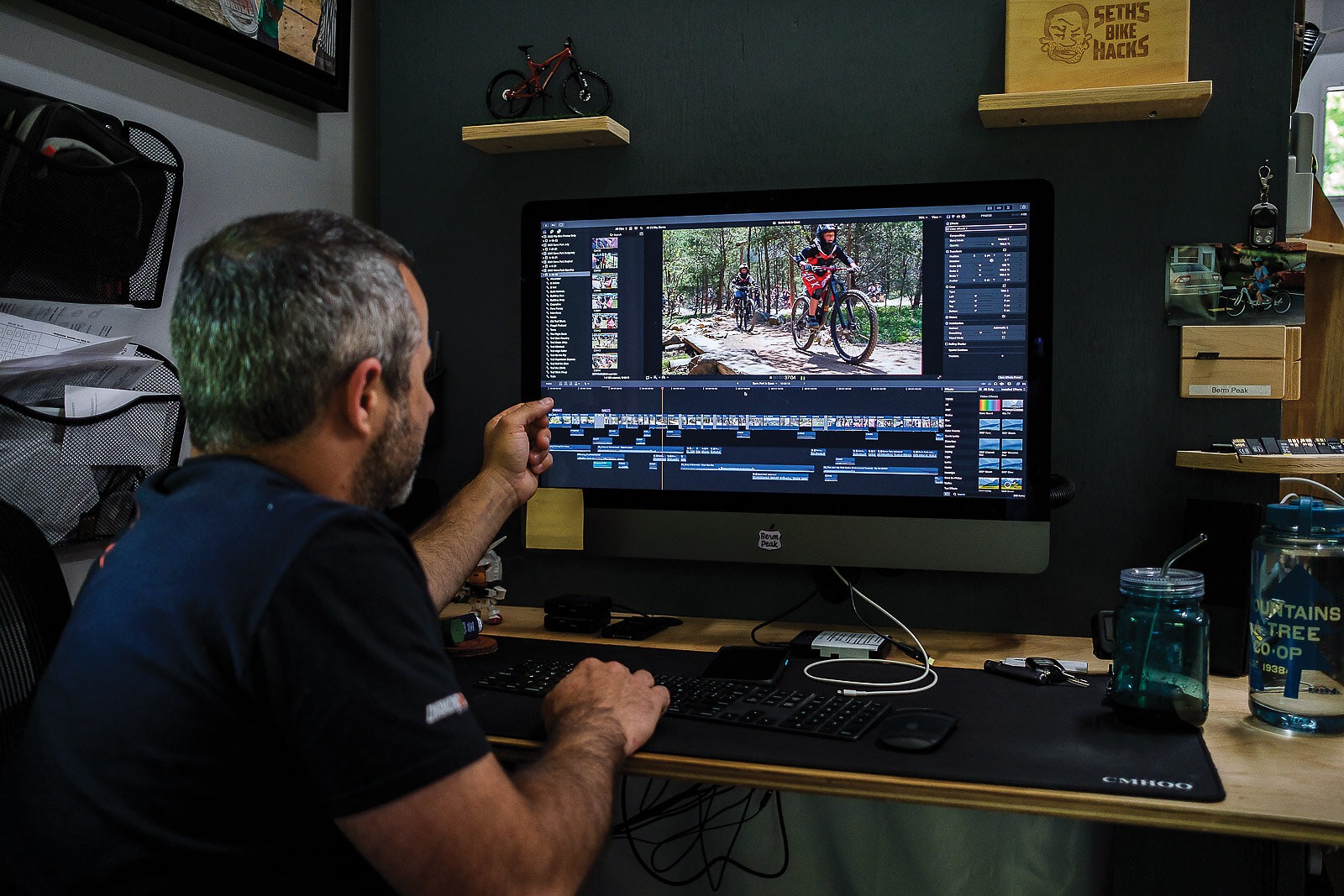
“Now that I have this audience, I know generally what they like, and I know what I like,” he says. “I’m doing things that I want to do because I am passionate about it.”
By 2019, Seth’s channel had reached a point at which the Patreon funding was no longer necessary. But he didn’t want to shut it down and focus solely on YouTube, especially since his Patreon supporters were provably his most loyal fans. So, he decided he’d try to channel their support and involvement into another dream: The building of a free, public bike park in his community. His original idea was to buy a piece of land with the Patreon money, find volunteers to build some jumps and then open it to the public.
“My Patreon supporters wanted to feel like they were supporting something, and they were giving to give,” Seth says. “So, I announced this on Patreon: I’m giving you all fair warning. Starting next month, I’m not posting extra content. Starting next month, you are not here for this. You are here to fund this public project I want to do. And everybody stuck around, and a lot of people doubled down.”
The race to find an appropriate patch of land was on. Seth met with officials from Pisgah Area SORBA, the local affiliate of the International Mountain Bicycling Association, and began scouring the Asheville area for a suitable plot. He quickly realized that an area municipality might be willing to donate a piece of land to the project, but he was unable to even get a meeting with Asheville officials.
Undaunted, Seth continued the search, eventually finding a chunk of land in Canton, about 18 miles west of Asheville via Interstate 40. The property was part of an economic opportunity zone, but repeated attempts to create business opportunities had failed. First, there was to be a 9,500-seat NASCAR facility, then an indoor ski resort, then a conference center and condo complex. The land, on the rugged flank of Chestnut Mountain, was an important wildlife refuge and the Southern Appalachian Highlands Conservancy (SAHC) was interested in it.
The SAHC protects areas throughout the southern Appalachians that are important for clean water, wildlife habitat and recreation. Their key interest in the property was its wildlife habitat, and they’d been mapping the movement of animals through the area. The SAHC had never worked on a project with mountain bikers, but they quickly realized the potential the property had to get people outside and engaged with nature, especially given the fact that it was the only forested patch of public land close to the main population center of Canton. So, the SAHC began talking with the town of Canton about the prospects for such a partnership.
“Out of those early conversations, we recognized this could be a nice synergistic project of conservation and recreation working together, in addition to the economic opportunity of outdoor recreation,” Hanni Muerdter said, who works as the SAHC’s conservation director.
“WE WANTED TO SHOW THAT THE SAME WAY YOU BUILD A TENNIS COURT OR A BASKETBALL COURT OR A SPLASHPAD OR ANYTHING IN YOUR CITY. ANYTHING TO MAKE THE LIVES OF YOUR CITIZENS BETTER, YOU CAN DO THE SAME EXACT THING WITH A BIKE PARK.” —SETH ALVO
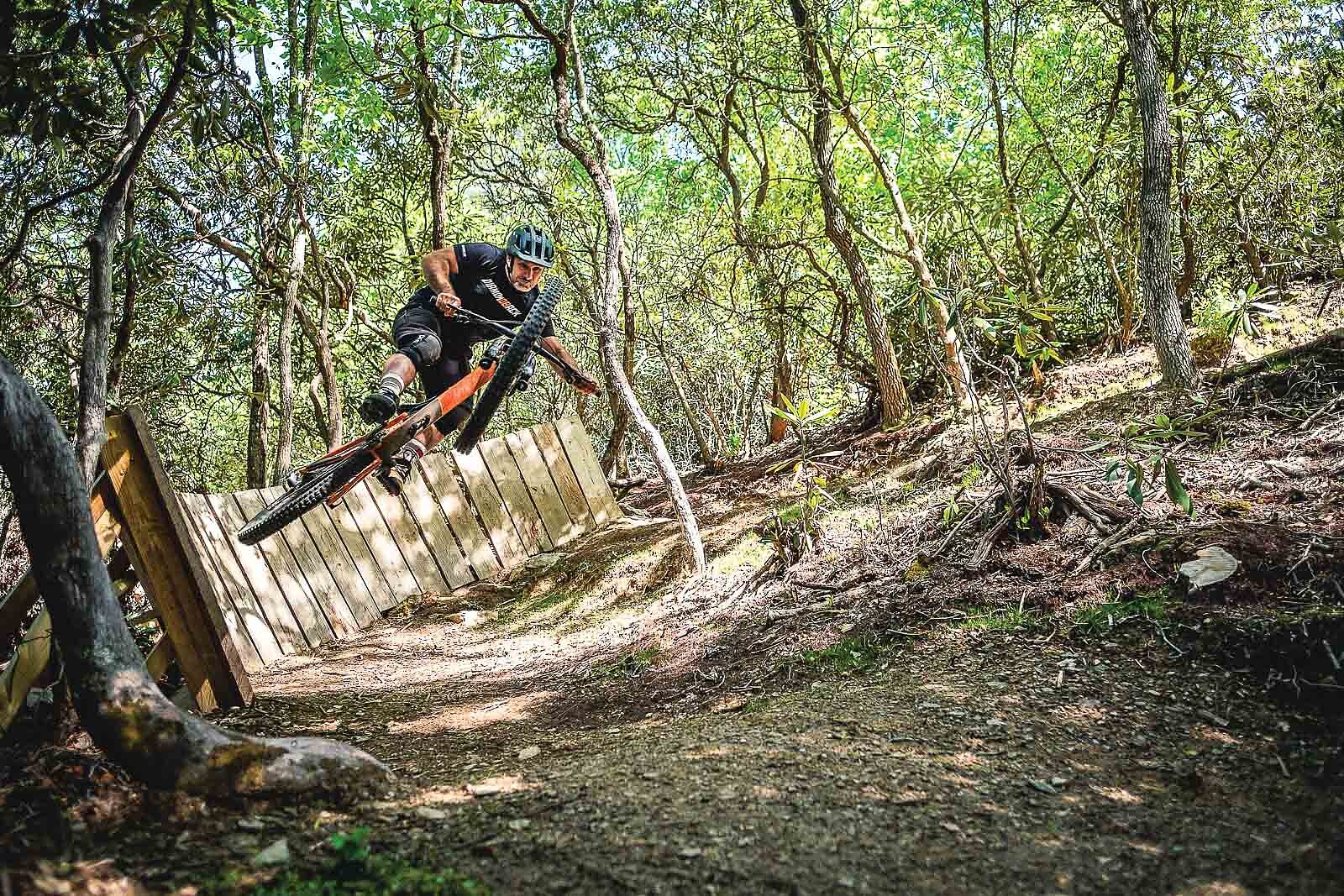
In order to make mountain bike trails happen on public land, however, all parties needed an ally in the municipal government. That person was Canton’s town manager, Nick Scheuer, a mountain biker who had already been tuned into Pisgah Area SORBA’s conversations about trail potential in the area.
“Seth came out to the property, we took a UTV up. We hiked around, and that was it,” Scheuer says. “It’s a mile and a half from downtown. It was a no-brainer.”
The town agreed to pay for a master trail plan for Chestnut Mountain, and for the design of Seth’s bike park within the greater park.
“We’ll do all the infrastructure, you crowdsource and fundraise and influence the design of the bike park,” Scheuer says. “It pretty quickly came to fruition.”
Behind the scenes, the SAHC secured the funds to buy the 448-acre Chestnut Mountain property for $2.9 million—a feat that was largely fueled by the raft of funding that can be unlocked in North Carolina when a trail project also addresses environmental concerns. Because the Chestnut Mountain project checked the boxes for wildlife protection and water quality improvement, funds became available from the North Carolina Land and Water Fund, the Community Foundation of Western North Carolina, the Pigeon River Fund, the Conservation Fund, the Conservation Trust for North Carolina and an Environmental Enhancement grant from the state Attorney General’s Office.
“Emphasizing the uniqueness of that conservation easement on a public park of this scale [is something] I don’t think has been done in our experience with a mountain bike park,” Muerdter says. Once the SAHC had purchased the property, it then sold it to the town of Canton for only $100,000, which was the remaining amount owed to the original landowner. The parcel was named the Chestnut Mountain Nature Preserve, a city park to be filled with trails, treehouses and outdoor classrooms—all designated based on feedback from more than 4,000 responses to a public survey. The town of Canton hired Equinox Environmental for the macro-level park planning and Elevated Trail Design for the trail master plan.
Still, funding was needed for the construction of Berm Park itself, which would occupy a 10-acre portion of the broader park. The Patreon funding had been accumulating, but Seth knew he’d need even more money to build the world-class bike park he envisioned, so he approached companies with which he already had a relationship. These companies were enthusiastic about the idea but had reservations about the actual execution of the plan, given that Seth had never managed a project of this scale.
“I basically had to tell them I’ve already signed a project,” Seth says. “I am paying for this thing. I guaranteed I would pay for the park so I could get commitments from everybody.”
With Seth’s personal guarantee and his own money on the line, the rest of the funding quickly fell into place. When Seth announced details of the plan to his followers, they were amazed that the channel was using its influence to create something bigger than any one person. And even more Patreon support began to flow.
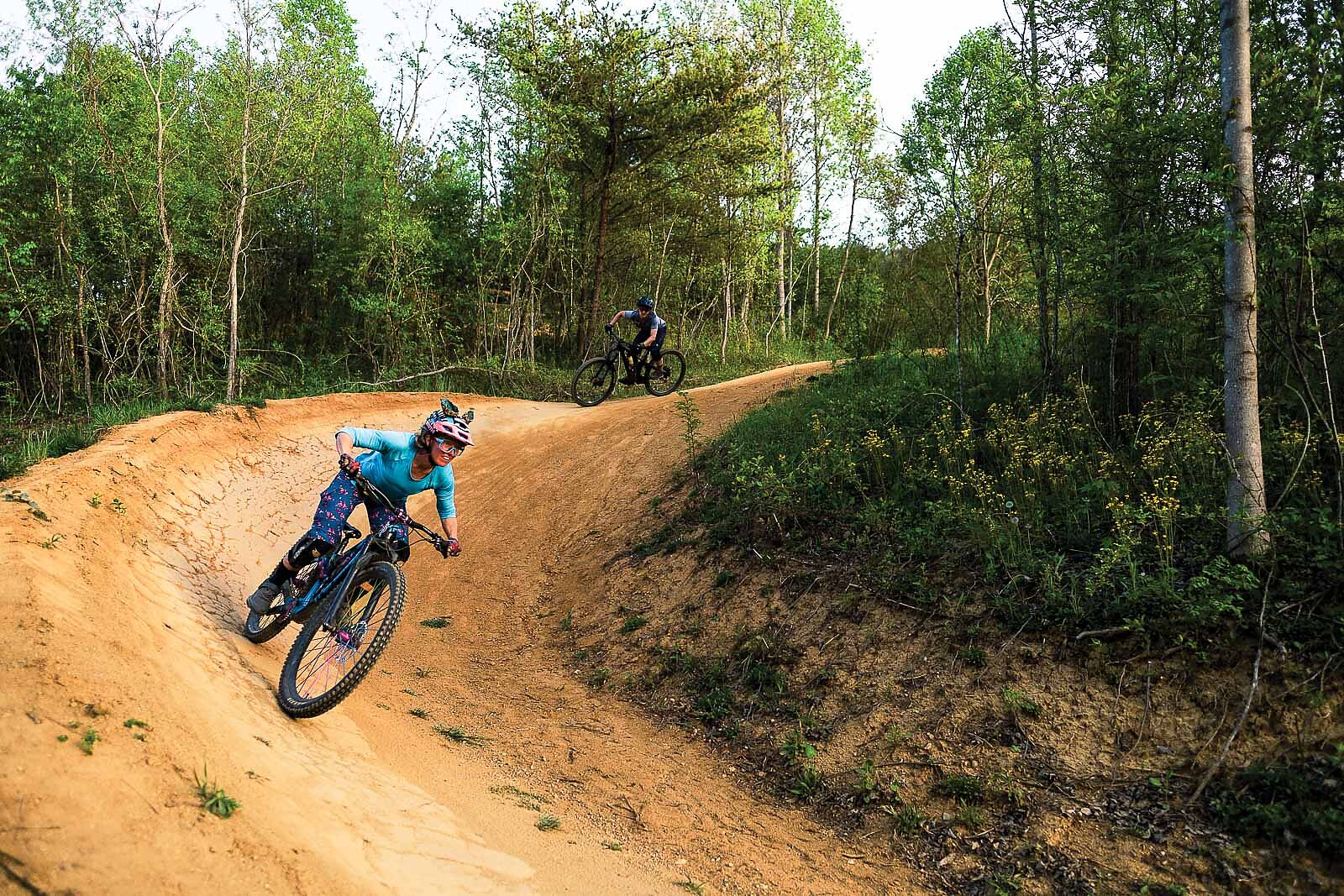
“By the time I had the park built we would have even more funds from Patreon,” Seth says. “We had solved the problem of paying for it and any extra would go to ongoing maintenance.”
When it came time to select the zone for Berm Park, the team settled on a portion of the property that had previously been graded in preparation for the NASCAR facility that had never come to be.
“It was already an impacted zone,” Muerdter says. “It made it a unique opportunity for mountain biking, which can be more damaging on trails in fragile areas.”
Seth’s vision for the zone was to create bike park-style features in a public setting, while also ensuring that there would be aspirational lines that would allow riders to truly progress their skills. From a green flow trail to a double-black wallride and cannon, the trails are designed to impress upon the visitor that they’ve been transported to a fairy tale land of large bike park features.
“I knew we had to put the park a little above the skill level of the majority of people so they would have room to grow,” Seth says. “Anybody who goes to Whistler for the first time, they come back a way better mountain biker. They progress more than they’ve ever progressed in their lives.”
Each trail is designed to help riders prepare for the next level, from smile-inducing greens and blues to blacks that will help riders appreciate how large features can be on the top end of the spectrum.
“It was paramount for the green and blue riders to have their speed controlled by the trail to take out their own influence, braking control, pumping,” says Peter Mills, the president of Elevated Trail Design. “Seth had a lot of respect and trust. He was like, ‘I play around in my backyard, but you guys are the professionals. Whatever you can do with this small area, let’s do it.’”
Each trail has its own sponsor, but perhaps more than any other, Click Bait represents the by-the-people, for-the-people ethos that Seth espouses. Funding for this advanced jump trail came exclusively from fans of Seth’s channel. They named the trail and wanted it to serve as an homage to the great jump trails of the world’s greatest bike parks. There are ride-arounds and bailouts for safety, so riders can progress at their own pace.
“Click Bait has some real jumps,” Seth says. “Now you’re getting a huge reward, a whole bunch of hits in succession, and even with your newfound skill, you’re getting stuff that scares the shit out of you.”
For all of the flow, the drops and the jumps, Berm Park was designed to protect water quality, with massive catchment basins connecting to drainpipes to ensure that the zone’s ecological habitat is actually improved.
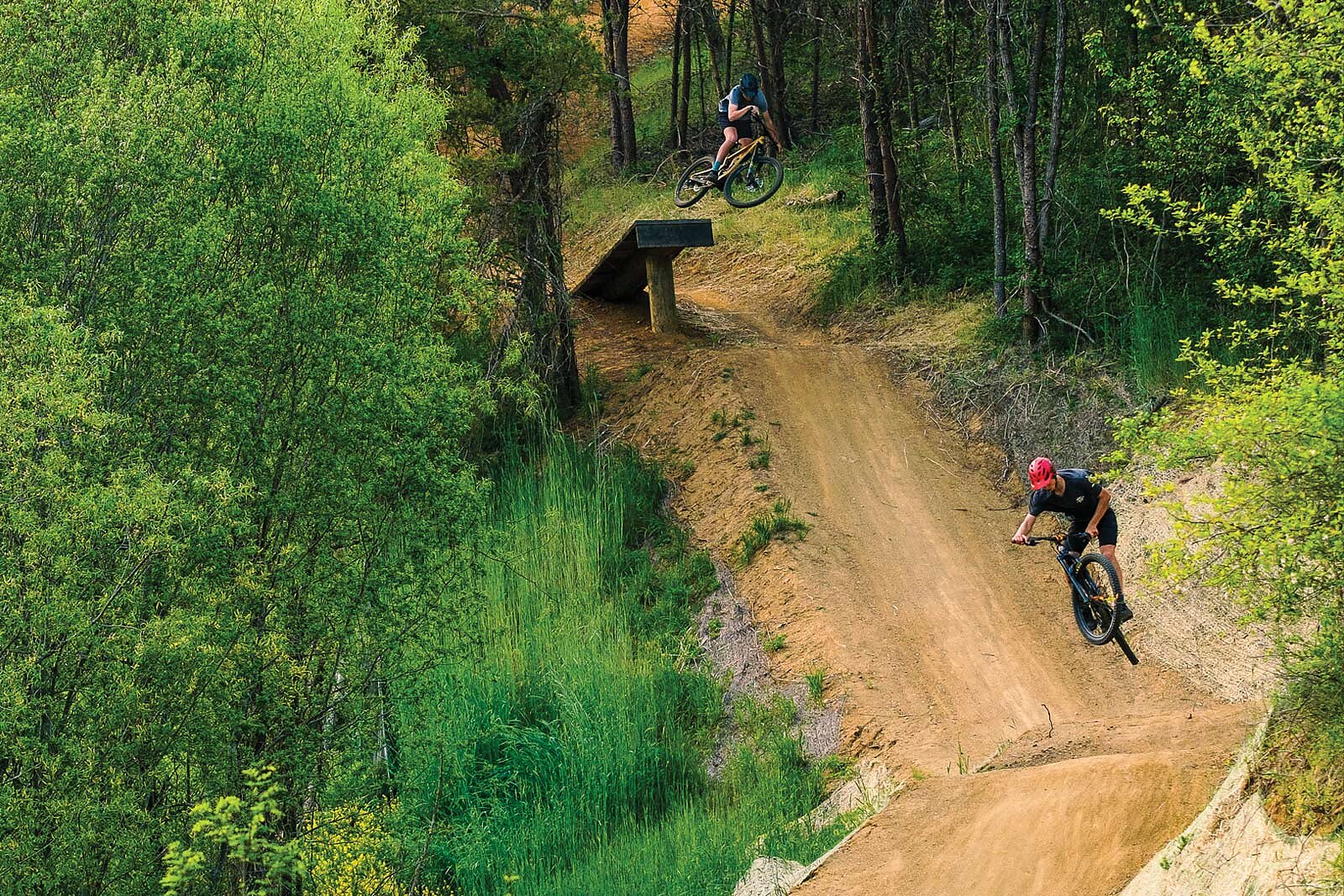
“I was impressed throughout the process with how understanding both Seth and Elevated Trail Design were of factors like water quality and the rules of what we were walking into,” Muerdter says. “I hope from a large conservation perspective that people realize conservation is really about foresight.”
Such foresight is what continues to take mountain biking from a once-fringe activity to a completely mainstream sport that may come to rival the popularity of many traditional stick-and-ball sports in the United States and Canada. Community leaders throughout North America are increasingly viewing trail networks as recreational facilities that promote health, wellness and outdoor recreation while also giving a boost to local economies.
“We wanted to show that the same way you build a tennis court or a basketball court or a splashpad or anything in your city,” Seth says, “Anything to make the lives of your citizens better, you can do the same exact thing with a bike park.”
As word of Berm Park’s unique cooperation and funding model spreads, it’s being viewed nationally as a case study in how individuals can help leverage resources to create trails. While not every community has an international YouTube star in its backyard, most towns these days have someone who is passionate about mountain biking and willing to work hard to bring trails to their community. The trick, as Seth hopes to point to, is connecting all the people—the riders, the residents, the environmentalists, the politicians and the companies— to support and create more opportunities to get people on bikes.
“From a politician’s standpoint, they’re seeing all the people there, and they’re thinking we just unlocked the next level,” Seth says. “Like one of the mushrooms that makes you grow into Super Mario. We just unlocked the secret to everything.”
A nearby baseball diamond cost a half-million dollars to build. Berm Park cost less than half of that and will be used by far more people.
“I’m biased,” says town manager Scheuer, “But I don’t think it can be overstated. I’ve got a six and a nine-year old. There was nothing like this for them to learn how to ride and get all the skill sets, and now it’s free for anyone to access.”
On Berm Park’s opening day, the scene was more akin to a Crankworx festival than a typical Canton town ribbon cutting. The parking lot was full within minutes and most of the nearby restaurants sold out of food. It wasn’t just mountain bikers who turned up, either. Curious Canton residents of all ages showed up to be a part of something new and interesting in their town. Berm Park is the people’s park. And little could make Seth happier than turning over the keys to a new era of riders.
Among the opening day crowd, Scheuer’s nephew scooted himself on a strider bike to the Flight Deck, the starting point for all the trails. “He put his arms in the air and said, ‘I’m a mountain biker,’” Scheuer happily recalls. “That’s it, man. The next generation.”
